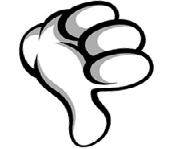Trade Cases

Section 232: A Shot in the Foot?
Written by Sandy Williams
July 16, 2017
What should the administration consider when evaluating the potential use of Section 232 to restrict steel imports? The U.S. Chamber of Commerce, which serves as a voice for business interests in Washington and represents more than three million businesses of varying size, sector and region, offered five questions that should be answered:
Do All Steel Imports Raise National Security Questions?
The answer is no, says John Murphy, senior vice president for international policy. Plenty of steel-consuming industries have nothing to do with national security and require steel imports that are not available domestically. Imposing tariffs against all steel imports would harm those industries.
Do Steel Imports from Allies Threaten U.S. National Security?
No, has been the answer from all of America’s allies. Under NATO and other U.S. defense treaties, an attack on one country is an attack on all. Purchasing steel from allies does not undermine domestic steel producers when it comes to our common defense. Tariffs against our closest trade partners, Canada and Mexico, would harm and not help the U.S. steel industry, says Murphy.
Could Broad Steel Tariffs or Quotas Harm U.S. Competitiveness?
Yes, says the U.S. Chamber of Commerce. Murphy cites as an example Section 201 “safeguard” tariffs on steel products imposed in 2002 and 2004. The tariffs boosted costs for manufacturers that use steel to produce goods in the U.S. and, according to one study, cost 200,000 Americans their jobs—more than the total number of American employees in the U.S. steel industry at the time.
“Imposing broad tariffs or other barriers against steel imports would undermine the competitiveness of U.S. manufacturers, incentivize offshoring, and endanger more American jobs than it would protect,” says Murphy.
Will Tariffs Invite a Counter-punch from Abroad?
Yes, and quickly, according to European Commission President Jean-Claude Juncker, who said retaliation would come within days, not months, of any tariff action by the United States. Products on the hit list for EU retaliation include Florida orange juice, Kentucky bourbon and Wisconsin dairy products, says Murphy. Not only would retaliation occur, he adds, but it would test the World Trade Organization’s national security exception on tariffs and quotas. Murphy cites a Financial Times report that said if the WTO were to issue a finding against a U.S. national security claim and it was ignored by the Trump administration, it would threaten WTO credibility. Conversely, if it found in favor of the U.S, it would open the door to a “protectionist free-for-all.”
Would this Arrow Hit the Target?
Not really, says Murphy. The globally recognized problem in the steel industry is steel overcapacity. China, the largest contributor to overcapacity, accounts for just 2 percent of U.S. steel imports. China has taken steps to reduce capacity and is ahead of its current target. The G20 summit called for development of concrete policy solutions by November to reduce excess steel capacity and unanimously supported the removal of market-distorting subsides by governments and other entities to “foster a truly level playing field.”
“It’s no panacea,” says Murphy, “but it goes to the heart of the matter. In the end, we do know this: The archer who doesn’t take careful aim risks shooting his allies—or even shooting himself in the foot.”

Sandy Williams
Read more from Sandy WilliamsLatest in Trade Cases

SMU Survey: Less support seen for Trump tariff policies
Meanwhile, an increasing number think it's too early to say whether the penalties are going to bring more manufacturing to the US.

CRU: USW seeks exclusion for Canada from Trump’s tariffs
The union is also urging stronger enforcement against countries such as China which break trade rules, and a coordinated Canada-US strategy to protect union jobs across the North America

Price on trade: A lot happened last week – and it wasn’t all about tariffs
Should foreign investment be allowed to reshape the American steel Industry? Not to be lost in the recent on-again-off-again tariff frenzy, Nippon Steel’s proposed takeover of U.S. Steel has also found itself in President Trump’s crosshairs when it comes to trade and industrial policy. Nippon Steel initially announced its nearly $15-billion bid for U.S. Steel […]

Trump signs executive order aimed at making US shipbuilding ‘great again’
President Trump on Wednesday signed an executive order meant to breathe new life into American shipbuilding and curb Chinese dominance in the sector.

Trump still against selling USS to Japanese firm: Report
Despite ordering a new review of Nippon Steel’s bid for U.S. Steel, President Trump said he is still against selling USS to a Japanese company, according to media reports.
